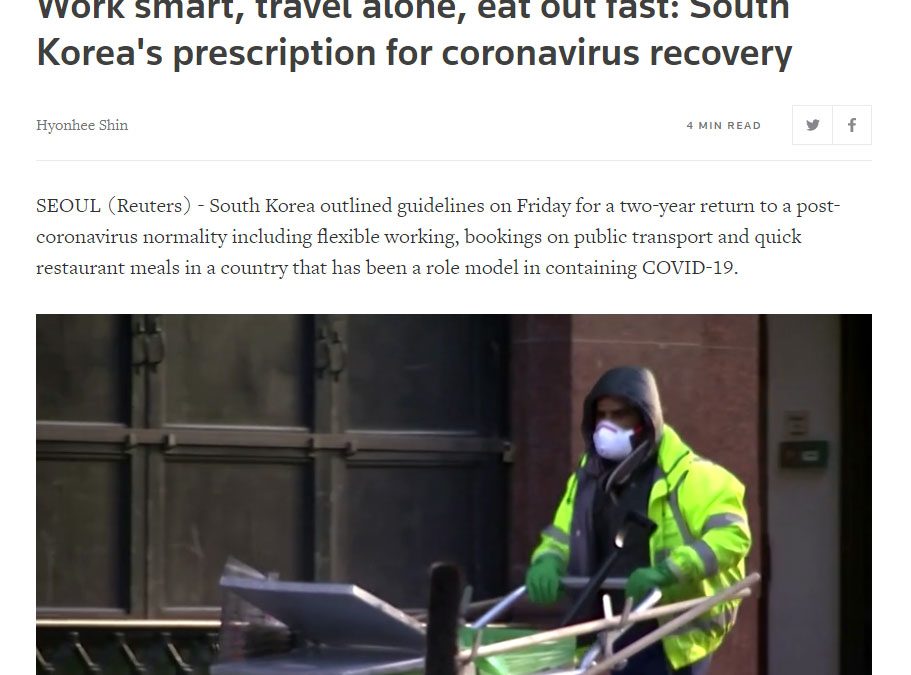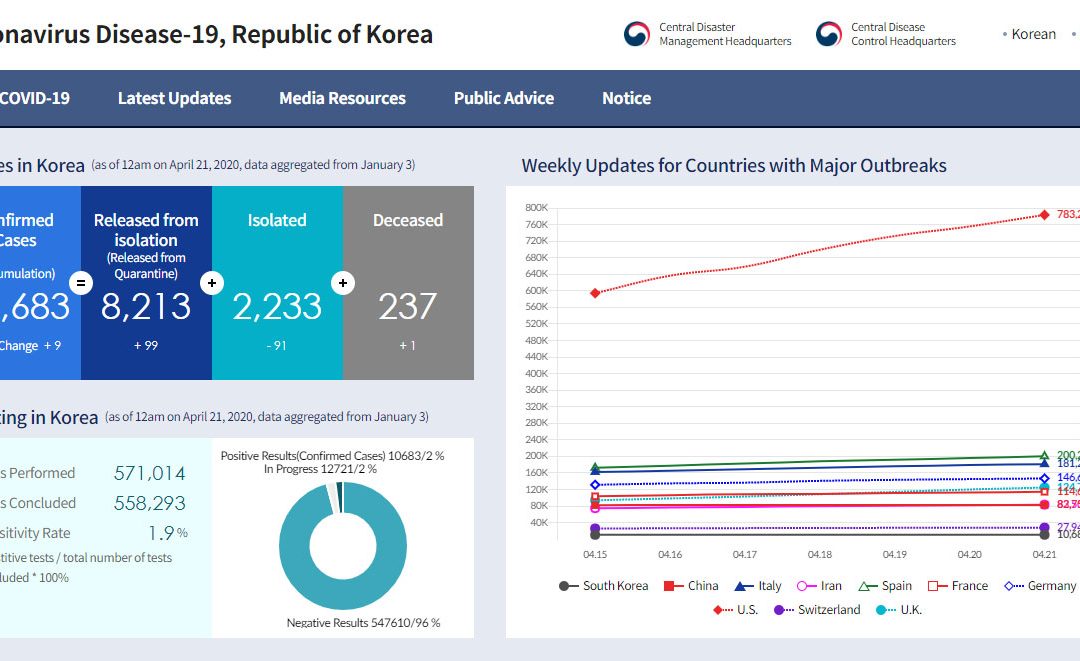
Work smart, travel alone, eat out fast: South Korea’s prescription for coronavirus recovery
Work smart, travel alone, eat out fast: South Korea's prescription for coronavirus recovery
| Eyes of World |

On April 24, the Reuters reported that the South Korean government, which has successfully curbed the spread of the coronavirus, has issued guidelines to recover from the virus crisis and return to daily life.
South Korea outlined guidelines on Friday for a two-year return to a post-coronavirus normality including flexible working, bookings on public transport and quick restaurant meals in a country that has been a role model in containing COVID-19.
The Korea Centers for Disease Control and Prevention (KCDC) reported just six new cases, the lowest number since the Feb. 28 peak of 909 in South Korea. Widespread testing, intensive contact tracing and tracking apps have enabled South Korea to limit the spread of the virus with social distancing rather than lengthy lockdowns.
However, the officials urged vigilance as imported cases and smaller clusters continued to emerge. “Some experts predict COVID-19 will stay for as long as two years, and we have to accept the reality that we can’t go back to pre-COVID-19 life during that time,” Vice Health Minister Kim Gang-lip told a briefing.
“The government is preparing a transition to a sustainable routine distancing scheme with the goal of carrying out regular social and economic activity and preventing COVID-19 infections at the same time,” he said.
The guidelines detail a code of conduct in areas including workplaces, transport, restaurants, shopping and sporting fixtures, starting with general rules such as washing hands, maintaining distance and regular temperature checks and disinfection.
Officials say the strategy will only work if people remain wary. “The biggest sign of danger in our society is becoming careless that the risks of infections are gone,” KCDC director Jeong Eun-kyeong said at a separate briefing.
Therefore, South Korea is preparing to successfully escape the COVID-19 crisis and return to daily life. Going a step further from the battle to prevent the virus from spreading, they are now in the preparation stage to end the virus and return to the normal.








